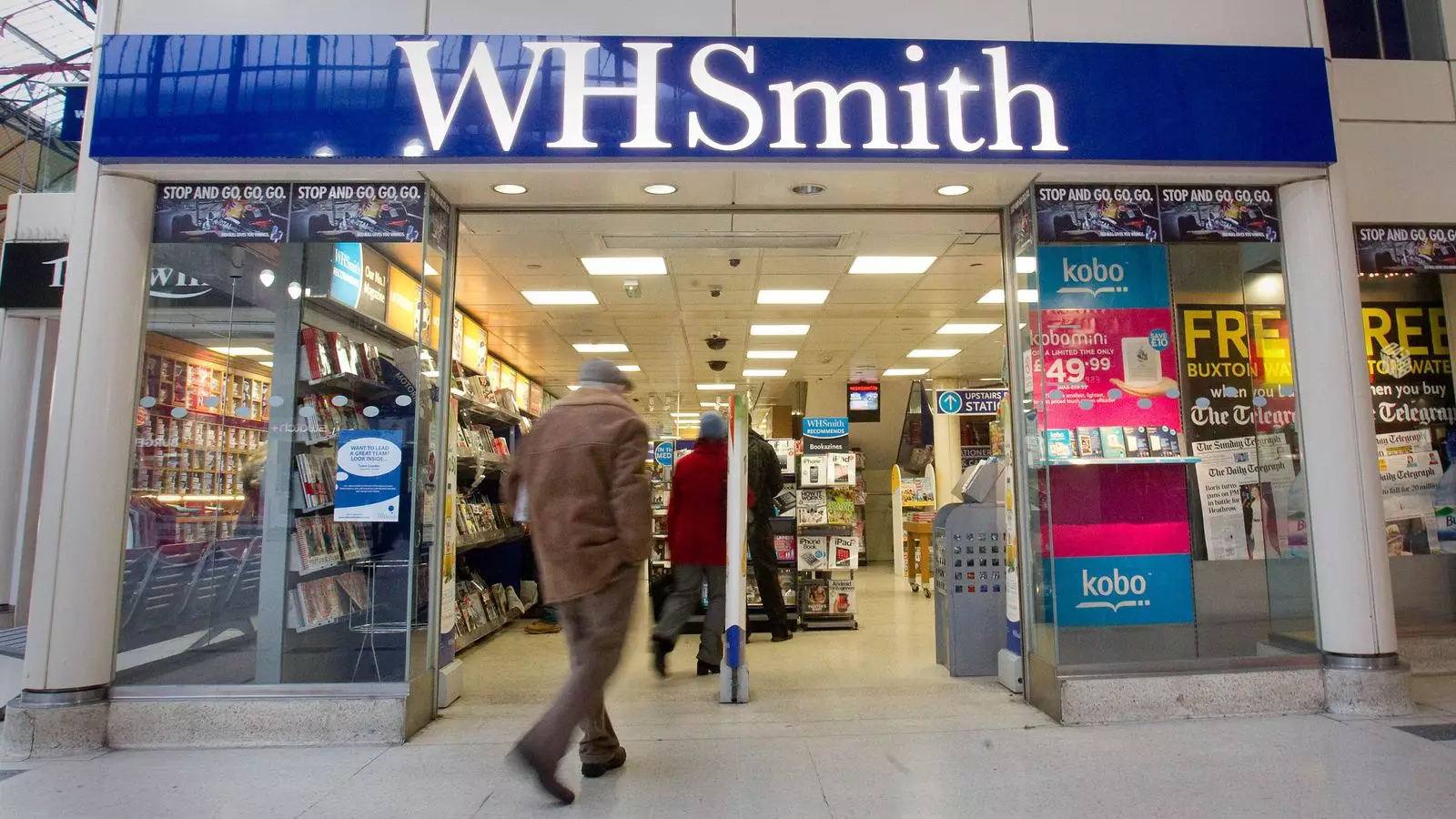WH Smith, an iconic pillar of Britain’s retail sector for more than two centuries, is quietly engaged in discussions to divest its entire high street business. This development marks a significant transition for a company that has anchored itself in British culture since it opened its first store in 1792. With a market capitalization nearing £1.5 billion, the company is faced with the undeniable pressures exerted by shifting consumer habits and the ongoing decline of traditional retail outlets.
The high street division, boasting around 500 stores and employing approximately 5,000 individuals, stands in stark contrast to WH Smith’s burgeoning travel retail segment. The latter has enjoyed robust growth, operating 600 outlets across the UK within airports, train stations, and hospitals. This strategic focus on the more lucrative travel market represents an evolving preference among consumers for convenience and diverse offerings, further highlighting the precarious position of brick-and-mortar establishments.
As WH Smith prepares to publicly announce its intentions on the London Stock Exchange, speculation arises regarding the prospective buyers interested in acquiring this storied retail business. The involvement of investment bankers from Greenhill indicates that the sale process has been meticulously orchestrated. Analysts suggest that a streamlined focus on travel retail is likely to resonate positively with investors. With travel retail generating 75% of the company’s revenue and an impressive 85% of its profits, the impending sale aligns with broader trends in retail where profitability often hinges on adaptability.
WH Smith’s performance within the high street segment has been less than stellar, exemplified by last year’s flat operating profit of £32 million. Traditional offerings like greeting cards, books, and stationery have struggled to capture the same consumer interest that once guaranteed thriving sales. In contrast, the travel arm diversifies its products to include food, drink, and technology goods, catering to a modern traveler’s needs and preferences.
This potential sale casts a long shadow over the future of high street retail in the UK, echoing challenges faced by several other well-known brands such as BHS and Debenhams, which have succumbed to the pressures of an evolving marketplace. The announcement that WH Smith would close around 15 stores this year is just one example of how the retail landscape is changing. An annual rationalization strategy indicates a comprehensive reevaluation of the high street footprint, a necessary step amid widespread market turmoil.
Notably, WH Smith’s retail endeavors in hospitals, while distinct from the high street business, further illustrate the company’s strategic pivot. With 145 stores already operating in hospitals and potential plans for expansion into 200 additional sites, this segment provides a glimmer of hope and suggests that WH Smith is refining its focus to better embrace where consumer demand lies.
As shares in WH Smith have dipped by about 5% in the last year, stakeholders are keenly watching the outcome of these negotiations. Investors will be particularly interested in how the sale might not only streamline the company’s operations but also amplify its profitability and market responsiveness. The potential for WH Smith to emerge as a purely travel retail entity holds promise, but it also underscores the operational risks associated with letting go of its high street heritage.
In a statement, WH Smith acknowledged its exploration of “strategic options,” suggesting the company recognizes the necessity of adapting to survive in an increasingly competitive market. With a history that dates back to the 18th century, WH Smith’s evolution and ability to navigate this tumultuous retail landscape could redefine its legacy.
As the talks progress, the future of WH Smith and its position in the annals of British retail will be shaped by the decisions made in the coming months. This pivotal moment not only signifies a possible end of an era but may also herald a new beginning, paving the way for WH Smith to align itself with modern retail realities and consumer expectations. The broader implications for the high street remain to be seen, but the overarching narrative is clear: survival hinges on innovation and adaptability in a world where traditional shopping paradigms are rapidly being dismantled.


Leave a Reply